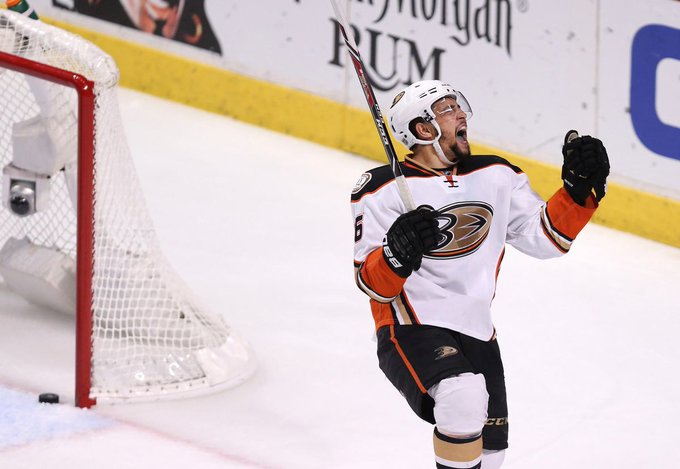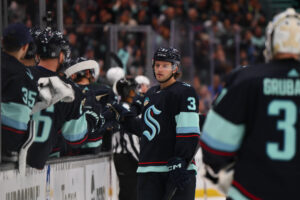NHL player development seems to always result in more questions than answers. How likely is it for a top pick to pan out? What makes a player a “steal”? Last Word On Hockey will be starting a new series on how to properly develop prospects from all different spots throughout the draft. This week’s piece involves draft picks in the back half of the first round and how they were used early in their careers.
NHL Player Development Of First-Round Picks
In the span of 2005 through 2015, there were 84 total selections made between 16th overall and 30th overall on forwards playing in North America. Looking at all 84 forwards, they were split into different categories. Those categories were “Forwards Deemed NHL-Ready and Brought In Immediately When Ready,” “Forwards Near NHL-Ready and Brought In Immediately When Near-Ready,” “Forwards Rushed Slightly,” “Forwards Rushed,” “Forwards Forced,” “A Little Patience,” “Patience,” and “Too Much Patience.”
There were 13 forwards who fell into the third category on the list. Of those 13 players, six made their NHL impacts at or before their DY+3 season. Those six players are Tanner Pearson, Nick Schmaltz, Kerby Rychel, Jordan Eberle, Emerson Etem, and Scott Laughton. In this piece, we will look at Etem and Laughton.
NHL Player Development Of Emerson Etem
Etem, drafted 29th overall in the 2010 draft by the Anaheim Ducks, came out of the Medicine Hat Tigers organization in the WHL. In his DY-1, however, he played for the US National Team Development Program, where he played a majority of games in the NAHL. There, he scored 19 goals and 14 assists for 33 points in 40 games, for 0.825 points per game. That ranked 38th out of the aforementioned 84 forwards in DY-1 production. Etem followed that up with 37 goals and 28 assists for 65 points in 72 games with Medicine Hat, for 0.903 points per game. That ranked 69th out of those same 84 forwards in DY production. Following his selection at 29th, he would play two more WHL seasons.
In his second WHL season, Etem scored 45 goals and 35 assists for 80 points in 65 games, for 1.231 points per game. That ranked 30th out of the 82 forwards still outside the NHL in DY+1 production. He would follow that up with 61 goals and 46 assists for 107 points in 65 games, for 1.646 points per game. That ranked sixth out of the 70 forwards still outside the NHL in DY+2 production. The following season, Etem would get his NHL shot.
How Was Etem Used?
In his first professional season, Etem would split between the AHL and NHL levels. At the AHL level, he played 45 games and scored 13 goals and 16 points. In the NHL, Etem played 38 games and averaged 11:28 time on ice per game. With that role, he scored three goals and seven assists for 10 points. Diving deeper, though his counting stats are not appealing, Etem posted solid analytics for a rookie. His even-strength offence goals above replacement (EVO) was modest at 1.1. Meanwhile, his even-strength defence goals above replacement (EVD) was solid for a rookie, at 0.5. With his decent even-strength impact, Etem’s wins above replacement (WAR) and goals above replacement (GAR) were decent, but not great, at 0.2 and 1.3, respectively.
In his second professional season, Etem would again split between the AHL and NHL levels. At the AHL level, he played 50 games and scored 24 goals and 30 assists for 54 points. Then, in the NHL, he would play 29 games and average 12:47 per game, a small raise from the year prior. Albeit, in fewer games. Regardless, in that role, he scored seven goals and 11 points. A step up, slightly, in point production, did not stop his analytics to regress towards replacement level. His EVO (0.2) and EVD (0.1) both fell down to basically replacement level. With his even-strength numbers dropping, Etem’s WAR (0) and GAR (0.1) would follow suit.
Etem’s NHL Player Development Continues Its Regression
Etem’s third professional season would be more of the same, splitting between the NHL and AHL. In the AHL, he played 22 games and scored 13 goals and 21 points. In the NHL, he played 45 games, a new career-high, and averaged 12:15 per game. With that role, he only scored five goals and 10 points. Analytically, Etem was painted as a liability. His EVO (-2.7) and EVD (-0.2) both fell below replacement level. That led to his WAR (-0.4) and GAR (-2.0) also being poor, and below replacement level.
Following that season, 2014-15, Etem would join the New York Rangers for part of the 2015-16 season, scoring three points in 19 games with them. He would be traded to the Vancouver Canucks, where he finished the season with 12 points in 39 games. In that offseason, he would return to the Ducks and play just three NHL games and one AHL game, with one AHL goal. Following that season, Etem joined the Arizona Coyotes organization, but played only 16 AHL games, scoring five points.
Where Did Etem End Up?
Tryout contract with Kings gives Emerson Etem another shot at NHL https://t.co/Iznm5d8Yb6 pic.twitter.com/W2E8OgX5Fv
— L.A. Times Sports (@latimessports) September 17, 2018
He’d leave part-way through that year, to the National League in Switzerland, for five games, and was held scoreless. Etem would return for nine AHL games the following season, with one goal, for the Los Angeles Kings farm team. His last season of hockey came in 2019-20, in the WMHL, scoring 14 goals and 33 assists for 47 points in 11 games. He is now retired. Etem’s NHL player development was not bad on the part of the teams he played for. He simply just didn’t pan out. With Brock Nelson being drafted directly after Etem, it seems this was a draft miss. Not a player development mishap.
NHL Player Development Of Scott Laughton
Laughton was drafted 20th overall by the Philadelphia Flyers in the 2012 draft and came out of the OHL’s Oshawa Generals organization. In his DY-1 season, he scored 12 goals and 11 assists for 23 points in 63 games, for 0.365 points per game. That ranked 73rd among the 84 forwards in DY-1 production. He would follow that up with 21 goals and 32 assists for 53 points in 64 games, for 0.828 points per game. That ranked 71st out of those same 84 forwards in DY production. After being drafted, Laughton would play two more seasons in the OHL.
In his DY+1 season, Laughton recorded 23 goals and 33 assists for 56 points in 49 games played, for 1.143 points per game. That ranked 38th out of the 82 forwards still outside the NHL in DY+1 production. In his final OHL season, Laughton scored 40 goals and 47 assists for 87 points in 54 games, for 1.611 points per game. That ranked seventh among the 70 forwards still outside the NHL in DY+2 production. After this season, Laughton would get his NHL shot.
How Was Laughton Used
In his first professional season, Laughton would split between the AHL and NHL. At the AHL level, he scored 14 goals and 13 assists for 27 points in 39 games. In the NHL, he scored two goals and six points in 31 games. That production was not great, but it also came while averaging 12:43 per game, a small role. On a deeper level, Laughton made a better impression on special teams than even-strength. That’s shown in the way his EVO (-0.2) and EVD (-0.2) were both below replacement level, but his WAR (0) and GAR (0.3) were not. Those numbers still aren’t good, but it is interesting.
The following season, Laughton would become a full-time NHLer. In 71 games, he averaged just 10:26, a much smaller role than the year before. Despite that drop in ice time, he still put up seven goals and 14 assists for 21 points. His analytics would not improve in the bigger picture, but his EVO (3.6) showed a big improvement. His EVD (-1.5), however, fell enough to warrant his WAR (0) to remain the same, and his GAR (0.2) to drop slightly.
Year Three NHL Player Development Takes Leap Backwards
In his third season, Laughton would play just two NHL games, with no points, and averaging 10:15 per game. There were no underlying stats to look at, as two games is not a big enough sample. Meanwhile, he would play 60 AHL games, scoring 19 goals and 20 assists for 39 points. It was a rough season for the young former first-rounder. However, there was a light at the end of the tunnel.
Following that third season, in 2016-17, Laughton would become a main-stay NHLer and never look back. Still remaining with the Flyers, he has played all five seasons since. In total, he played 332 games in that span, recording 55 goals and 74 assists for 129 points, and averaging 14:19 per game. Despite the poor NHL player development in his first three seasons, which was warranted by his poor underlying stats, he pulled it together. His fourth season was key, and likely his last chance as a young kid to prove himself. He scored 20 points that year and warranted a longer look. While he isn’t a top-six guy, he’s done a nice job bouncing back from a rough third year to be a bottom-six mainstay for the Flyers.
Junior league stats via Elite Prospects, NHL stats via Hockey Reference, NHL analytics via Evolving Hockey






